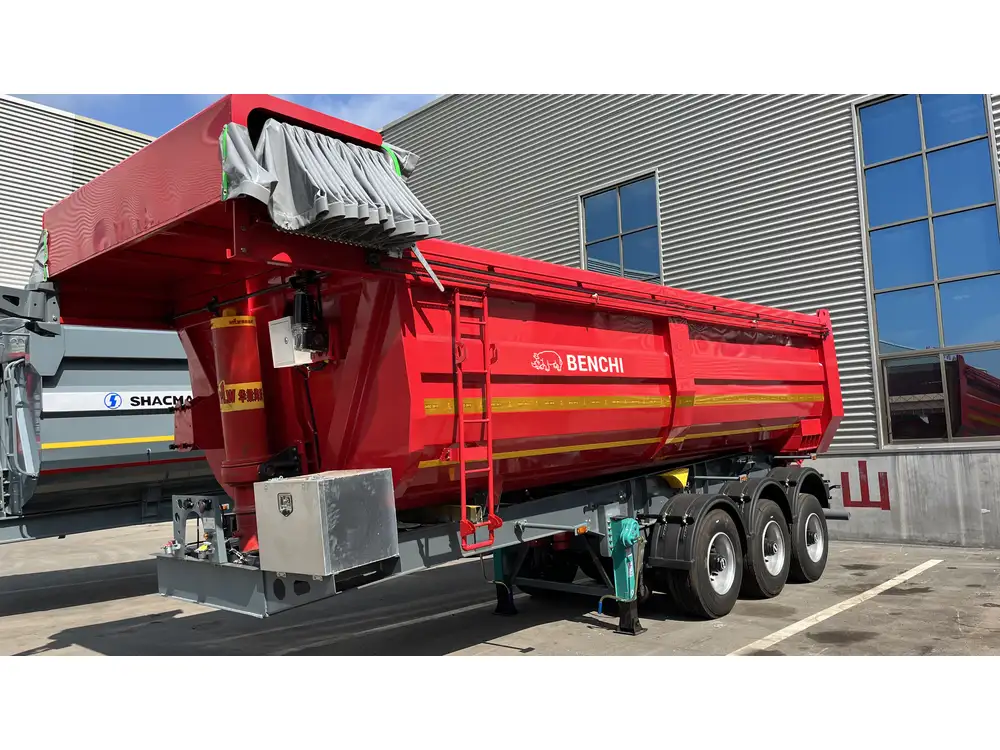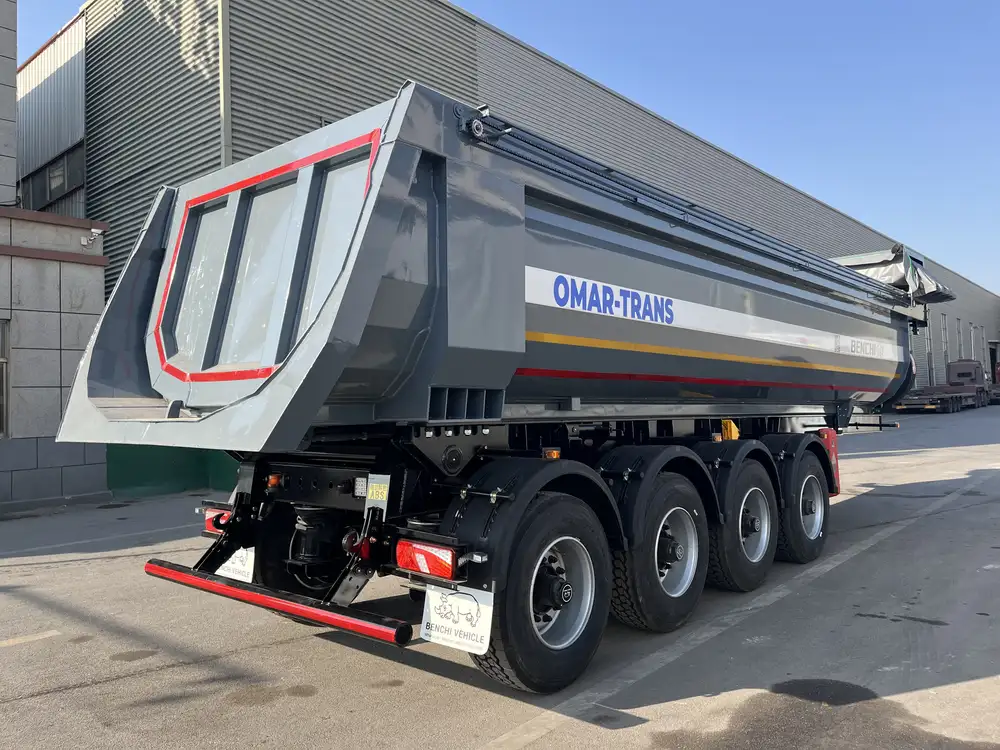When navigating the complex landscape of logistics and transportation, one question frequently arises: how tall can a semi-trailer be? The answer to this pivotal query is essential not only for manufacturers and owners of semi-trailers but also for regulatory authorities, logistics planners, and those who are involved in freight. In this article, we will delve deep into the height limitations imposed by federal, state, and local regulations, the influence of trailer design, and the implications on road safety and efficiency.
The Basics of Semi-Trailer Height Regulations
Federal Regulations: A National Standard
In the United States, federal regulations set the groundwork for semi-trailer height limitations. The Federal Highway Administration (FHWA) primarily governs these regulations. According to the FHWA, the maximum allowable height for a semi-trailer is 13 feet 6 inches (4.1 meters) from the ground. This measurement is pivotal as it pertains to the standardization of transportation across state lines, ensuring that trucks can travel from one jurisdiction to another without running afoul of variant local regulations.
| Regulation Authority | Maximum Allowable Height | Measurement Context |
|---|---|---|
| Federal Government | 13′ 6″ (4.1 m) | National interstate highways |

State Regulations: Variations in Heights
While federal regulations provide a overarching baseline, each state has the authority to impose its own regulations that may either align with or differ from federal standards. Several states have opted for or permitted larger heights under specific circumstances, particularly for specialized cargo or vehicles:
| State | Maximum Height Allowed | Special Conditions |
|---|---|---|
| California | 14′ 0″ (4.27 m) | Special permits for oversized loads |
| Texas | 14′ 0″ (4.27 m) | Structural considerations for freight corridors |
| New York | 13′ 6″ (4.11 m) | Consistent with federal regulations |
This variability illustrates the crucial importance of checking local regulations before transporting goods. Inevitably, road conditions, bridge clearances, and urban planning must be considered when determining appropriate trailer height.
Design Considerations: Trailer Types and Their Heights
Common Semi-Trailer Types
There are various types of semi-trailers, each designed to cater to specific transport needs. These variations inherently lead to differences in height:
Standard Flatbed Trailers: Usually measure around 13′ 6″ but can vary depending on cargo.
Enclosed Trailers: Similar height limitations as standard trailers; however, height may be adjusted for-added loading capacity and protection from the elements.
Lowboy Trailers: Specifically designed for transporting heavy equipment, typically maintain a lower profile (often around 12′ 0″ to 13′ 0″) for easier loading and stability.
Reefers (Refrigerated Trailers): Generally conform to the standard height but vary slightly due to insulation and refrigeration equipment.

Why Trailer Height Matters
Understanding the height of various semi-trailer types is crucial for the following reasons:
- Aerodynamics: Higher trailers can impact fuel efficiency.
- Stability: Lower trailers often provide better stability due to lower centers of gravity.
- Loading Compatibility: Must fit under specific loading docks or facilities, which may have height restrictions.
The Importance of Clearing Height
Road Conditions and Infrastructure
One of the key considerations for the height of semi-trailers is infrastructure compatibility. Many urban areas are designed with optimal clearances for trucks, including bridges, overpasses, and trees. Awareness of these factors can prevent costly accidents and damages. For instance, every inch counts when it comes to navigating tight corridors in metropolitan areas where height restrictions impose significant challenges.
- Urban Areas: High-density zones may have a standard clearance of 13′ 0″ to 13′ 6″ due to traffic structures.
- Rural Areas: Often allow for higher loads, but unexpected obstacles may still exist.

The Role of Route Planning
Efficient route planning is critical in ensuring that the chosen paths can accommodate the height of the semi-trailer. A comprehensive pre-journey assessment, considering height-wise restrictions along the route, can help avoid headaches that arise from impassable obstacles.
| Strategy | Details |
|---|---|
| Utilize Route Planning Tools | GPS systems designed for trucks can indicate height restrictions. |
| Verify with Local Authorities | Always check with local transportation departments for updates on road conditions. |
Safety Implications of Semi-Trailer Heights
Accident Prevention
Understanding the height limitations of semi-trailers transcends mere compliance; it has profound implications on road safety. Over-height vehicles pose significant risks, including:
- Collision with Overhead Structures: This is a leading cause of accidents involving tall vehicles.
- Vehicle Instability: Higher trailers can shift the center of gravity, contributing to rollover accidents, especially when maneuvering corners.

Regulations and Safety Measures
To mitigate these concerns, several proactive measures can be implemented:
Use Height Monitoring Tools: Dedicated devices can ensure that drivers are aware of their vehicle’s height before embarking.
Education and Training for Drivers: Ensuring that truck drivers are trained on the limitations and safety protocols related to semi-trailer heights is essential.
Regular Maintenance Checks: Keeping an eye on the trailer’s height features, especially after load adjustments, is a vital check.
| Safety Measure | Implementation |
|---|---|
| Height Monitoring | Install sensors/alarms |
| Driver Education | Utilize training programs |
| Maintenance Protocols | Routine inspections and adjustments |
The Future: Trends Influencing Semi-Trailer Heights
Advances in Trailer Design
Innovations in technology and design may influence future height regulations. For instance, the emergence of aerodynamic enhancements could evolve the standard height framework, possibly allowing for more streamlined designs without compromising safety.

Environmental Considerations
With the push for eco-friendly freight solutions, lower-profile trailers could become even more prevalent. Manufacturers may seek to reduce fuel consumption through innovative designs that encourage lower heights staffed with better aerodynamics.
The Influence of Autonomous Trucks
As the industry pivots towards automation, the engineering of semi-trailers, including their height configurations, may shift significantly. Autonomous technologies could facilitate more efficient height analytics, ensuring compliance in real-time.
Conclusion: Striking a Balance Between Compliance and Efficiency
In summation, understanding how tall a semi-trailer can be is a cornerstone of effective logistics management. By navigating the intricate web of federal and state regulations, recognizing the design characteristics of various trailer types, and prioritizing safety measures, stakeholders in the transportation industry can optimize their operations.
Height is not just a numerical limitation; it encapsulates an array of considerations, including safety, efficiency, compliance, and environmental implications. As the transportation industry continues to evolve, so too will the strategies used to address these complex challenges.
In the competitive realm of semi-trailer manufacturing and logistics, staying informed and proactive will play a significant role in securing a company’s reputation and operational success, paving the way for a safe, efficient, and compliant future on the roadways.



